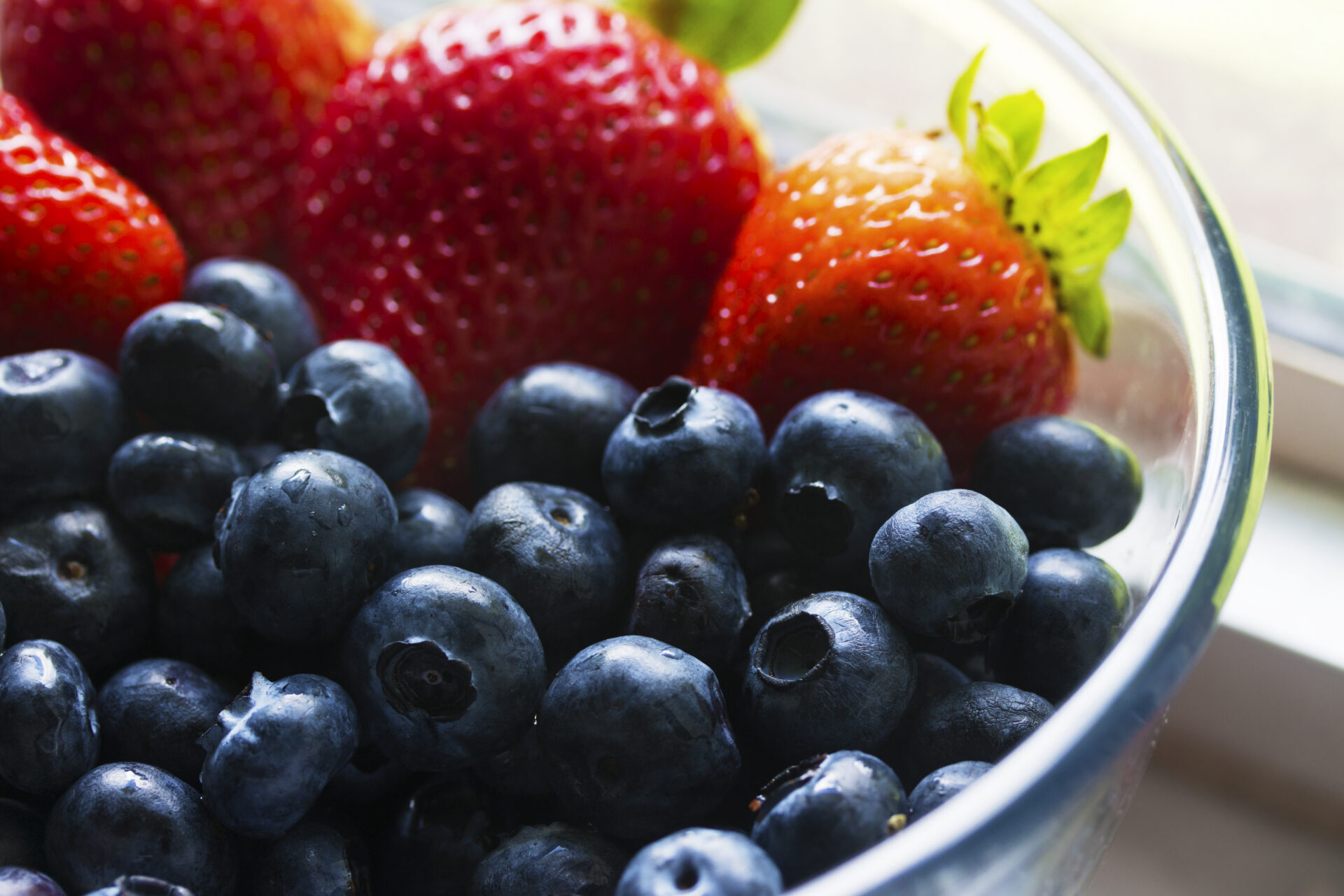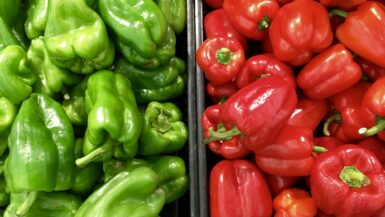Eating a high-fiber diet has numerous health benefits that many people are not aware of. Fiber is an essential nutrient that plays a crucial role in maintaining a healthy digestive system, reducing the risk of chronic diseases, and promoting weight loss. Despite its many benefits, however, many people do not consume enough fiber in their daily diets. In this article, we will explore the advantages of eating a high-fiber diet and provide tips on how you can increase your fiber intake to improve your overall health and well-being.
What is a high-fiber diet and why is it important?
A high-fiber diet is one that includes foods that are rich in dietary fiber. Dietary fiber is a type of carbohydrate that cannot be digested by the body. Instead, it passes through the digestive system largely intact, providing a range of health benefits.
There are two main types of dietary fiber: soluble and insoluble. Soluble fiber dissolves in water and forms a gel-like substance in the digestive tract. This type of fiber can help to lower cholesterol levels and regulate blood sugar levels. Insoluble fiber, on the other hand, does not dissolve in water and adds bulk to stool, promoting regular bowel movements.
A high-fiber diet is important for a number of reasons. Firstly, it can help to improve digestion and prevent constipation. Secondly, it can aid in weight management and weight loss by helping to promote feelings of fullness and reducing overall calorie intake. Thirdly, a high-fiber diet can reduce the risk of heart disease and stroke by lowering cholesterol levels and regulating blood pressure. Finally, fiber is important for gut health and reducing the risk of colon cancer.
The recommended daily intake of fiber is 25 grams for women and 38 grams for men. However, studies have shown that many people do not consume enough fiber in their diets. Therefore, it is important to incorporate more fiber-rich foods into your daily diet.
How does a high-fiber diet improve digestion and prevent constipation?
One of the most well-known benefits of a high-fiber diet is its ability to improve digestive health and prevent constipation. This is because fiber adds bulk to stool, making it easier to pass through the digestive system.
When we eat fiber, it absorbs water and swells in the digestive tract, creating larger, softer stools that are easier to pass. This can help to prevent constipation and promote regular bowel movements.
Furthermore, a high-fiber diet can also help to promote the growth of healthy gut bacteria. This is because fiber acts as a prebiotic, providing food for the beneficial bacteria in our gut. These bacteria help to break down fiber and produce short-chain fatty acids, which have been shown to have a number of health benefits, including reducing inflammation in the gut and improving overall gut health.
In addition, a high-fiber diet can also help to reduce the risk of developing hemorrhoids and diverticulitis, two conditions that are commonly caused by constipation and straining during bowel movements.
Overall, incorporating more fiber-rich foods into your diet is an effective way to promote digestive health, prevent constipation, and support the growth of healthy gut bacteria.
The role of fiber in weight management and weight loss
If you’re looking to manage your weight or lose weight, a high-fiber diet can be a helpful tool. This is because fiber is filling and can help to reduce overall calorie intake.
When we eat foods that are high in fiber, they take longer to digest and keep us feeling full for longer periods of time. This can help to prevent overeating and snacking between meals, leading to a reduction in overall calorie intake.
Furthermore, fiber can help to regulate blood sugar levels, which can also aid in weight management. When we eat foods that are high in refined carbohydrates, such as white bread or sugary snacks, our blood sugar levels can spike and then crash, leading to feelings of hunger and cravings for more sugary foods. However, when we eat foods that are high in fiber, they can help to slow down the absorption of sugar into the bloodstream, leading to more stable blood sugar levels and fewer cravings for sugary foods.
Studies have also shown that a high-fiber diet can be effective for weight loss. In one study, participants who followed a high-fiber diet lost more weight and had greater improvements in body composition compared to those who followed a low-fiber diet.
Overall, incorporating more fiber-rich foods into your diet can be an effective strategy for weight management and weight loss. However, it’s important to note that simply adding more fiber to your diet won’t necessarily lead to weight loss if you’re still consuming too many calories overall. A balanced diet that includes a variety of nutrient-dense foods is key for achieving and maintaining a healthy weight.
How a high-fiber diet can reduce the risk of heart disease and stroke
Heart disease and stroke are two of the leading causes of death worldwide. However, a high-fiber diet may help to reduce the risk of developing these conditions.
One way that fiber can help to reduce the risk of heart disease and stroke is by lowering cholesterol levels. Soluble fiber, in particular, has been shown to be effective at reducing LDL (“bad”) cholesterol levels. This is because soluble fiber binds to bile acids in the digestive tract, preventing them from being absorbed into the bloodstream. As a result, the liver must use cholesterol to make more bile acids, which can help to lower overall cholesterol levels.
In addition, a high-fiber diet can also help to regulate blood pressure levels. This is because fiber helps to improve blood vessel function and reduce inflammation in the body, both of which can contribute to high blood pressure.
Furthermore, studies have shown that a high-fiber diet may be beneficial for reducing the risk of developing type 2 diabetes, which is a major risk factor for heart disease and stroke. This is because fiber helps to regulate blood sugar levels and prevent insulin resistance, which can lead to high blood sugar and an increased risk of developing diabetes.
Overall, incorporating more fiber-rich foods into your diet can be an effective strategy for reducing the risk of heart disease and stroke. However, it’s important to note that a balanced diet that includes a variety of nutrient-dense foods is key for overall heart health.
The impact of fiber on blood sugar levels and diabetes prevention
Fiber plays an important role in regulating blood sugar levels and preventing the onset of type 2 diabetes. This is because fiber slows down the absorption of sugar into the bloodstream, preventing spikes in blood sugar levels.
When we eat foods that are high in refined carbohydrates, such as white bread or sugary snacks, our blood sugar levels can spike and then crash, leading to feelings of hunger and cravings for more sugary foods. However, when we eat foods that are high in fiber, they can help to slow down the absorption of sugar into the bloodstream, leading to more stable blood sugar levels and fewer cravings for sugary foods.
In addition, a high-fiber diet can help to prevent insulin resistance, a condition in which the body’s cells become less responsive to insulin, leading to high blood sugar levels and an increased risk of developing type 2 diabetes. This is because fiber helps to regulate blood sugar levels and prevent spikes in insulin production.
Studies have shown that consuming a high-fiber diet can be effective for preventing the onset of type 2 diabetes. In one study, participants who consumed a high-fiber diet had a 27% lower risk of developing type 2 diabetes compared to those who consumed a low-fiber diet.
Overall, incorporating more fiber-rich foods into your diet can be an effective strategy for regulating blood sugar levels and preventing the onset of type 2 diabetes. However, it’s important to note that a balanced diet that includes a variety of nutrient-dense foods is key for overall diabetes prevention and management.
The benefits of fiber for gut health and reducing the risk of colon cancer
Fiber plays a crucial role in maintaining gut health and reducing the risk of colon cancer. This is because fiber helps to promote the growth of healthy gut bacteria and prevent the buildup of harmful bacteria in the digestive tract.
When we eat fiber, it passes through the digestive system largely intact, providing food for the beneficial bacteria in our gut. These bacteria help to break down fiber and produce short-chain fatty acids, which have been shown to have a number of health benefits, including reducing inflammation in the gut and improving overall gut health.
In addition, a high-fiber diet can help to reduce the risk of developing colon cancer. This is because fiber helps to promote regular bowel movements and prevent the buildup of harmful substances in the colon. Furthermore, studies have shown that consuming a high-fiber diet can be effective for reducing the risk of developing colon cancer. In one study, participants who consumed a high-fiber diet had a 22% lower risk of developing colon cancer compared to those who consumed a low-fiber diet.
It’s important to note that not all types of fiber are created equal when it comes to gut health. Soluble fiber, in particular, has been shown to be effective for promoting healthy gut bacteria and reducing the risk of colon cancer. Good sources of soluble fiber include oats, barley, beans, and fruits such as apples and oranges.
Overall, incorporating more fiber-rich foods into your diet can be an effective strategy for promoting gut health and reducing the risk of colon cancer. However, it’s important to note that a balanced diet that includes a variety of nutrient-dense foods is key for overall gut health and cancer prevention.
How to incorporate more fiber into your diet with delicious and healthy food choices
Eating a high-fiber diet doesn’t mean sacrificing flavor or giving up your favorite foods. In fact, there are many delicious and healthy options that can help you increase your fiber intake.
1. Choose whole grains
Whole grains are a great source of fiber, and they are also rich in vitamins and minerals. Try swapping out refined grains like white bread, pasta, and rice for whole grain versions like whole wheat bread, brown rice, and quinoa. You can also incorporate whole grains into your diet with foods like oatmeal, popcorn, and whole grain crackers.
2. Eat more fruits and vegetables
Fruits and vegetables are naturally high in fiber, as well as other important nutrients like vitamins and antioxidants. Aim to include a variety of colorful fruits and vegetables in your diet, and try to eat them both raw and cooked. Some high-fiber options include raspberries, blackberries, pears, broccoli, and sweet potatoes.
3. Add legumes to your meals
Legumes like lentils, beans, and chickpeas are an excellent source of fiber, protein, and other important nutrients. Try adding them to soups, salads, and stir-fries, or using them as a base for vegetarian burgers and dips like hummus.
4. Snack on nuts and seeds
Nuts and seeds are a great source of fiber, healthy fats, and protein. Try snacking on almonds, walnuts, or pumpkin seeds, or add them to your meals as a crunchy topping or ingredient.
5. Experiment with new recipes
Don’t be afraid to try new recipes and experiment with different ingredients. There are many delicious and healthy meals that can help you increase your fiber intake, like vegetable stir-fries, quinoa salads, and bean soups.
By incorporating these fiber-rich foods into your diet, you can improve your overall health and reduce your risk of many chronic diseases. Just remember to drink plenty of water and increase your fiber intake gradually to avoid any potential digestive discomfort.
The potential side effects of a high-fiber diet and how to avoid them
While a high-fiber diet can have many health benefits, it’s important to be aware of the potential side effects and take steps to avoid them.
1. Gas and bloating
One common side effect of a high-fiber diet is gas and bloating. This can happen because fiber is fermented by the bacteria in your gut, which can produce gas. To avoid this, it’s important to increase your fiber intake gradually and drink plenty of water to help move the fiber through your digestive system.
2. Constipation
Ironically, a high-fiber diet can sometimes lead to constipation if you don’t drink enough water. Fiber absorbs water as it moves through your digestive system, so if you’re not drinking enough water, the fiber can become hard and difficult to pass. To avoid this, make sure to drink plenty of water throughout the day, especially when you’re increasing your fiber intake.
3. Diarrhea
On the other hand, if you increase your fiber intake too quickly, it can sometimes lead to diarrhea. This is because fiber can speed up the movement of food through your digestive system. To avoid this, increase your fiber intake gradually and make sure to drink plenty of water to help move the fiber through your system.
4. Nutrient deficiencies
If you’re eating a high-fiber diet, it’s important to make sure you’re still getting all the nutrients your body needs. This is because fiber-rich foods can sometimes displace other nutrient-rich foods in your diet. To avoid this, make sure to eat a variety of nutrient-rich foods, including fruits, vegetables, whole grains, lean protein, and healthy fats.
5. Interference with medication
Finally, it’s important to be aware that some types of fiber, like psyllium husk, can interfere with the absorption of certain medications. If you’re taking medication, talk to your doctor before starting a high-fiber diet to make sure it’s safe for you.
By being aware of these potential side effects and taking steps to avoid them, you can enjoy the many health benefits of a high-fiber diet without any negative consequences.
The importance of drinking enough water when consuming a high-fiber diet
When it comes to a high-fiber diet, water is just as important as fiber. In fact, without enough water, a high-fiber diet can actually lead to constipation and other digestive problems.
1. Why water is important for a high-fiber diet
Water plays a crucial role in helping fiber move through your digestive system. When you eat fiber, it absorbs water and swells up, which helps to add bulk to your stool and keep it soft. Without enough water, the fiber can become hard and difficult to pass, leading to constipation and other digestive problems.
2. How much water you should drink
The amount of water you should drink depends on a variety of factors, including your age, weight, and activity level. As a general rule, you should aim to drink at least 8 cups (64 ounces) of water per day. However, if you’re eating a high-fiber diet, you may need to drink even more water to help move the fiber through your digestive system.
3. Tips for drinking more water
If you’re not used to drinking a lot of water, it can be challenging to increase your intake. Here are some tips to help you drink more water:
- Carry a reusable water bottle with you and sip on it throughout the day.
- Drink a glass of water before each meal.
- Flavor your water with fresh fruit or herbs to make it more appealing.
- Drink water instead of sugary drinks like soda and juice.
- Eat water-rich foods like fruits and vegetables.
4. Other fluids that can help
In addition to water, there are other fluids that can help you stay hydrated and support your digestive system. These include:
- Herbal tea
- Broth-based soups
- Coconut water
- Low-sugar fruit juice
By drinking enough water and other fluids, you can help support your digestive system and enjoy the many health benefits of a high-fiber diet.





Leave a reply